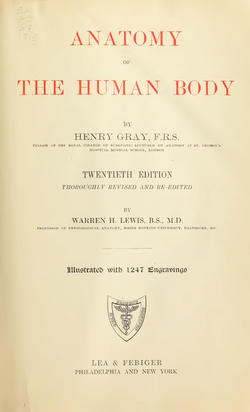Pre-modern texts
Ancient Egypt

- Ramesseum medical papyri (c. 1800 BCE)
- Kahun Gynaecological Papyrus (c. 1800 BCE)
- London Medical Papyrus (c. 1600 BCE)
- Ebers Papyrus (c. 1550 BCE)
- Edwin Smith Papyrus (c. 1500 BCE) - Earliest mention of the brain; the pulse; the role of the heart in circulating blood, but not complete circulation. [1] It is the world's oldest surgical textbook, [2] containing descriptions of the zygomatic bone, dura mater, cerebrospinal fluid, and nasal cavity. [2]
- Brugsch Papyrus (c. 1200 BCE)
Ancient Greece
- Hippocratic Corpus (c. 400 BCE to 200 CE) - Contains many important medical treatises including the Hippocratic Oath . [3] Compared with the Egyptian papyri, the Hippocratic writings exhibit an improved understanding of brain structure and function. It correctly attributed the primary control of the body's function to the brain. [2]
- Galenic corpus (c. 200 BCE)
- De Materia Medica (Dioscorides) (c. 50 CE)
- Medical Compendium in Seven Books (c. 600 CE)
Ancient China
- Huangdi Neijing (c. 300 BCE) - Most authoritative Chinese source on medical matters for over two millennia. [4] It contributed to the Chinese understanding of anatomy, [5] and it continues to be used as an influential reference work for practitioners of traditional Chinese medicine. [6] The book contains many guidelines and recommendations for the prevention of chronic diseases and micronutrient deficiencies such as beriberi, xerophthalmia, and goitre. [7]
- Wushi'er Bingfang (c. 200 BCE)
- Shennong Ben Cao Jing (c. 200 CE)
- Shanghan Lun (c. 220 CE)
- Liu Juanzi Guiyi Fang (C. 499 CE)
- Compendium of Materia Medica (c. 1578 CE)
Ancient India
- Kashyapa Samhita (6th century BCE)
- Sushruta Samhita (c. 300 BCE) - Early description of cataract surgery. [8] The Sushruta Samhita emphasizes the importance of anatomical structure and function, [9] and it contains the earliest written description of the pedicled flaps. [10] It was translated into Arabic during the latter part of the 8th century. [9]
- Bower Manuscript (c. 470-550 CE) [11] [12] [13]
- Charaka Samhita (c. 300-500 CE) - One of the fundamental texts of Ayurveda medicine, it was translated into Chinese, Arabic, and Tibetan languages. [14]
Roman Empire
Islamic Golden Age

- Kitab al-Taṣrif (c. 1000) - Surgical encyclopedia. [15]
- Book of Optics (c. 1000) - Exerted great influence on Western science. [16] It was translated into Latin and it was used until the early 17th century. [17] The German physician Hermann von Helmholtz reproduced several theories of visual perception that were found in the first Book of Optics, which he cited and copied from. [18]
- The Canon of Medicine (c. 1000) - Described by Sir William Osler as a "medical bible" and "the most famous medical textbook ever written". [19] The Canon of Medicine introduced the concept of a syndrome as an aid to diagnosis , and it laid out an essential framework for a clinical trial. [20] It was translated into Latin by Gerard de Sabloneta and it was used extensively in European medical schools. [20] [21] It also became the most authoritative text on anatomy until the 16th century. [22]
- Commentary on Anatomy in Avicenna's Canon (c. 1200): First description of the pulmonary circulation system, [23] and the first description of the presence and function of coronary circulation. [24]
Medieval Europe

- Compendium Medicinæ ("Compendium of Medicine") (c. 1230-1250) [26] [27] [28]
- Thesaurus Pauperum ("Treasury of The Poor") (c. 1270) [29] [30]
- Rosa Anglica ("The English Rose") (1304-1317) [28] [31] [32]
- La Chirurgie ("Surgery") (1306-1320) [33]
- Stockholm, Royal Library, manuscript X. 90 (early fifteenth-century). A significant and compendious collection of Middle English medical recipes, charms, and treatises.
- Universa Medicina [34]
Renaissance
- De Humani Corporis Fabrica Libri Septem
- Exercitatio Anatomica de Motu Cordis et Sanguinis in Animalibus
- De pulmonibus obseruationes anatomicae [35]
- Adversaria Anatomica [36]
- De sedibus et causis morborum per anatomen indagatis [37]
